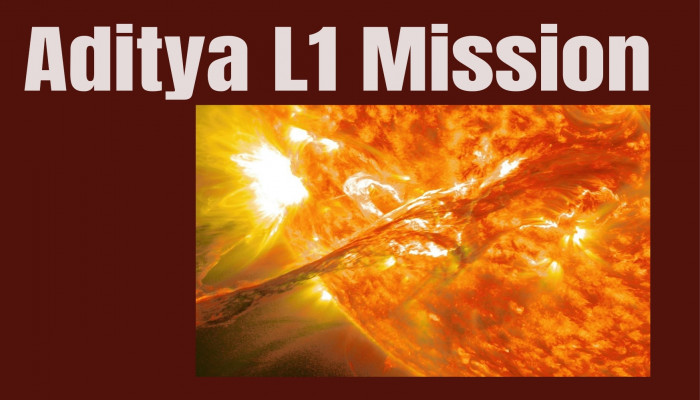Aditya-L1 Mission achieves milestone with VELC: Advancing solar research and space weather monitoring
- In Reports
- 10:20 PM, Nov 04, 2024
- Myind Staff
The Aditya-L1 mission has recently announced its first scientific finding, which includes a precise estimation of when a solar coronal mass ejection (CME) begins. This milestone was achieved using data gathered from the Visible Emission Line Coronagraph (VELC) payload on board the spacecraft.
The VELC is a vital instrument on India's Aditya-L1 spacecraft, specifically designed to investigate the Sun's corona. Launched on September 2, 2023, VELC serves as the primary payload of this mission, aiming to deepen our understanding of solar dynamics and their effects on space weather.
Launched on September 2, 2023, by the Indian Space Research Organisation (ISRO), Aditya-L1 is India's inaugural dedicated mission to study the Sun. It is stationed at Lagrange Point 1 (L1), located approximately 1.5 million kilometres from Earth. This strategic position facilitates uninterrupted observation of solar phenomena, free from interruptions caused by the Earth's shadow.
The VELC payload is engineered to capture 1,440 images of the Sun each day, delivering high-resolution data that is essential for understanding solar dynamics. It utilises advanced imaging techniques, including spectroscopy and spectro-polarimetry, to analyse various aspects of the solar corona, chromosphere and solar flares. This capability allows scientists to monitor coronal mass ejections (CMEs) and other solar activities in real-time.
VELC is located at Lagrange Point 1 (L1), approximately 1.5 million kilometers from Earth, enabling continuous observation of the Sun without interruptions from eclipses or occultations. This unique position allows VELC to create a "total solar eclipse" effect, which is vital for in-depth studies of the solar corona.
The coronagraph captures images with a spatial resolution ranging from 1.25 to 2.5 arcseconds, allowing it to observe the corona closer to the Sun than any previous missions. VELC is designed to transmit 1,440 images daily, providing real-time data for scientific analysis.
In addition to imaging capabilities, VELC includes spectroscopy and spectro-polarimetry functionalities. These features enable scientists to analyse various spectral lines, which are crucial for understanding coronal heating processes and the dynamics of coronal mass ejections (CMEs).
The primary scientific goals of VELC include understanding coronal heating, specifically investigating why the solar corona reaches temperatures exceeding one million degrees Celsius while the Sun's surface remains around 6,000 degrees Celsius.
VELC will also monitor coronal mass ejections (CMEs), which are massive bursts of solar wind and magnetic fields that rise above the solar corona or are released into space. To detect these events in real time, the instrument utilises an automated algorithm developed by the Indian Institute of Astrophysics (IIA) and the Aryabhata Research Institute of Observational Sciences (ARIES).
By continuously observing solar activities, VELC will provide crucial data on space weather phenomena that can impact satellites and communication systems on Earth.
The development of VELC was spearheaded by the Indian Institute of Astrophysics (IIA) in collaboration with the Indian Space Research Organisation (ISRO). The instrument was assembled and tested at IIA's facilities prior to its integration into the Aditya-L1 spacecraft. The payload features advanced optical components specifically designed to reduce light scatter, thereby improving image clarity and data quality.







Comments